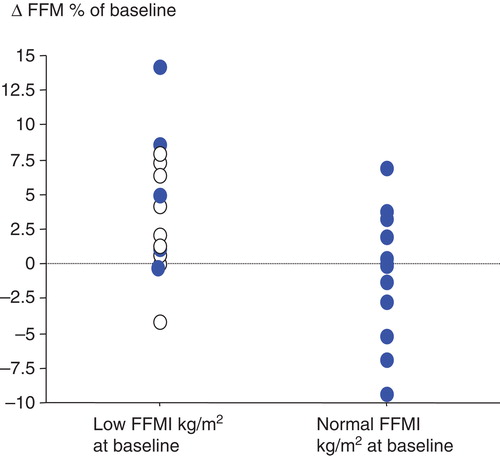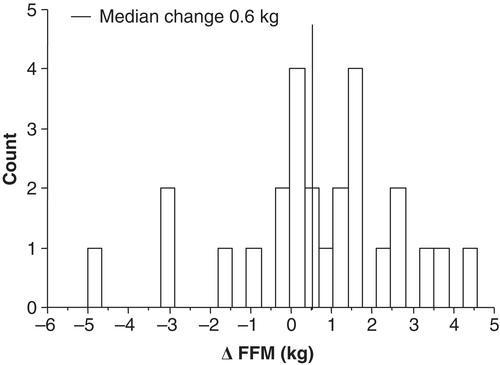Figures & data
Table I. Baseline characteristics and changes in body composition and physical capacity, for patients with low or normal fat-free mass index (FFMI). Low was defined as FFMI ≤16 kg/m2 for men and ≤15 kg/m2 for women.
Figure 1. Changes in fat-free mass (FFM) in patients with low fat-free mass index (FFMI) and normal FFMI between baseline and four months of training. Low FFMI is defined as FFMI ≤16 kg/m2 for men and ≤15 kg/m2 for women. Filled-symbols = patients given no supplementation; open symbols = patients given supplementation.

Figure 2. Distribution of changes in fat-free mass (FFM) between baseline and four months of training.

Table II. Associations between changes in fat-free mass (FFM), and variables showing lung function, body composition, systemic inflammation, physical capacity, and dyspnoea at baseline.
Table III. Associations between changes in fat-free mass (FFM), and age, sex, lung function, dyspnoea, and fibrinogen. Estimates (beta coefficients) are adjusted for all the variables in the table.
